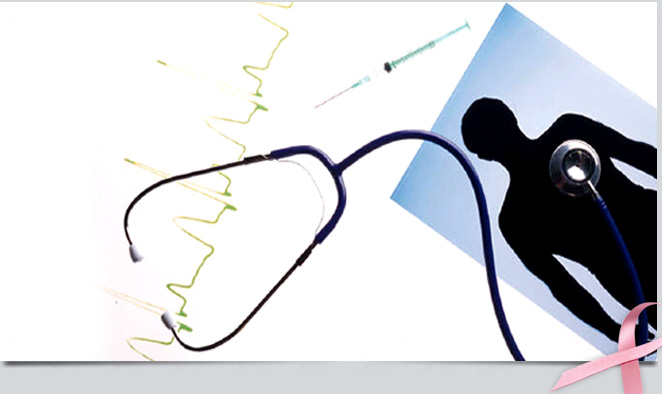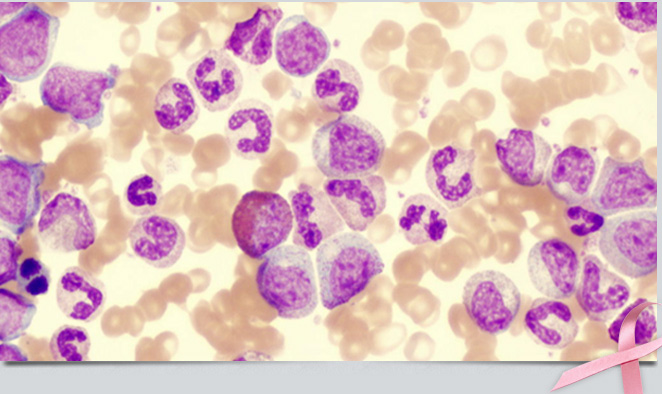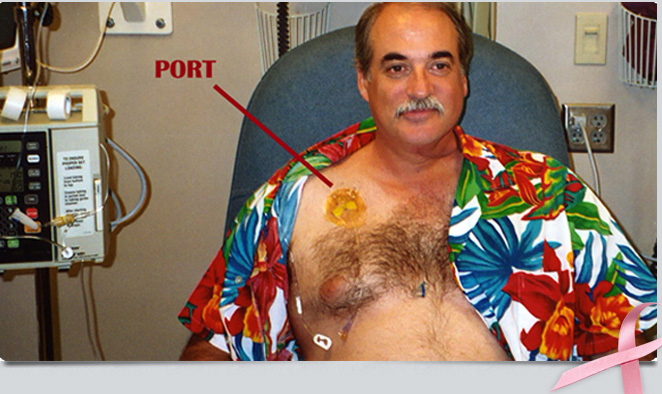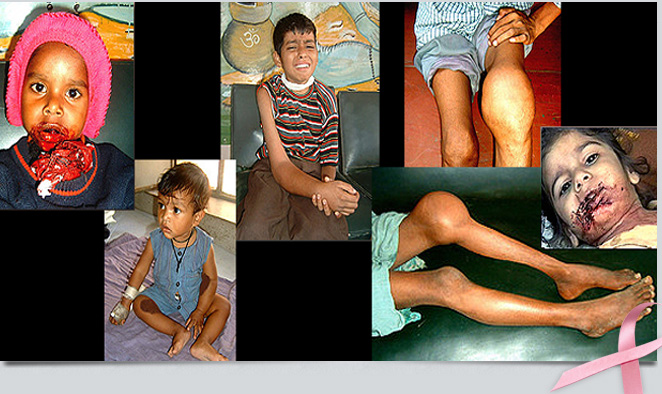Adult Acute Lymphoblastic Leukaemia
Adult acute lymphoblastic leukaemia is a form of cancer affecting blood- producing cells in the bone marrow. Although adult ALL is a very serious disease which is almost uniformly fatal if not treated, it is potentially curable with standard chemotherapy, with or without stem cell transplantation. About eight out of ten patients will achieve a remission but overall cure rates are between 20 and 40%. The difference between the number of patients who achieve remission and those who are cured is mainly due to those patients who experience relapse of their original disease.
 Treatment is based on the use of drugs in various combinations. There are three phases to treatment of adult ALL. The initial phase is called remission induction and uses relatively high drug doses to rapidly reduce the number of leukaemia cells in the body. This phase typically lasts between three and eight weeks on an inpatient basis. Consolidation therapy is intended to further reduce the number of leukaemia cells in the body and this treatment may last for several months. Treatment to the central nervous system is given as intrathecal chemotherapy, with or without cranial irradiation. Finally, and uniquely to this form of leukaemia, there is a maintenance phase extending to two years from the time of diagnosis during which patients take low doses of drugs as outpatients. Treatment is based on the use of drugs in various combinations. There are three phases to treatment of adult ALL. The initial phase is called remission induction and uses relatively high drug doses to rapidly reduce the number of leukaemia cells in the body. This phase typically lasts between three and eight weeks on an inpatient basis. Consolidation therapy is intended to further reduce the number of leukaemia cells in the body and this treatment may last for several months. Treatment to the central nervous system is given as intrathecal chemotherapy, with or without cranial irradiation. Finally, and uniquely to this form of leukaemia, there is a maintenance phase extending to two years from the time of diagnosis during which patients take low doses of drugs as outpatients.
Stem cell transplantation is not used routinely in the treatment of adult ALL. It may be appropriate for a high proportion of the patients, however, thought to be at high risk of relapse or for patients who have experienced relapse but have achieved a second remission.
The prognosis for adult ALL varies depending in part on characteristics of the patient such as age and other medical problems and in part on the features of their disease. Each patient should seek individual advice on their prognosis from their specialist.
Acute Lymphoblatic Leukaemia (ALL) in Children:
Unlike in adults, ALL in children has much better outcome. With modern chemotherapy, upto 80-90% of patients can be fully cured from this dreaded cancer.
Adult Acute Myeloid Leukaemia
Adult acute myeloid leukaemia is a form of cancer that affects blood-producing cells in the bone marrow. Although adult AML is a very serious disease that is almost uniformly fatal if not treated, it is potentially curable with standard chemotherapy, with or without stem cell transplantation. Patients in the best risk group have about a 70% chance of being long term survivors with chemotherapy alone. For those who relapse, a stem cell transplant may be an option.
Younger patients in the standard- and poor-risk groups have a somewhat better chance of survival if they have a matched sibling who can act as donor for a stem cell transplant. The outlook for patients whose disease has relapsed tends to be poor.
Treatment is based on the use of drugs in various combinations. The treatment of adult AML is based around a series of short blocks of treatment given over about four to six months, most or all of which is spent as an inpatient. A special case is Acute Promyelocytic Leukaemia in which a drug called All Trans Retinoic Acid (ATRA) is the mainstay of treatment. Arsenic is also used in this situation.
Stem cell transplantation is not appropriate for all groups of patients with adult AML. It is usually recommended in first remission for selected patients in standard- and high- risk groups but not for patients in good-risk groups. Good-risk patients have a high chance of successful re-treatment after relapse so the risks of a stem cell transplantation in first remission are not justified.
The prognosis for adult AML varies depending in part on characteristics of the patient such as age and other medical problems and in part on the features of their disease. Each patient should seek individual advice on their prognosis from their specialist.
Chronic Myeloid Leukaemia (CML)
Chronic Myeloid Leukaemia is a cancer of the bone marrow stem cells. It presents with raised white cell counts and enlarged spleen. There is an Oncogene called BCR/ABL which contributes to this disease. Once very difficult to treat, this cancer has become very easy to manage now. A series of excellent drugs given by mouth are bringing this disease into remission. This drugs are targeted chemotherapy, i,e they act on the BCR/ABL oncogene and it’s by-products with no undue chemotherapy-related complications.
 Chronic Lymphocytic Leukaemia Chronic Lymphocytic Leukaemia
Chronic lymphocytic leukaemia is a form of cancer which affects blood producing cells in the bone marrow. The disease is unknown in childhood, very uncommon in young people and becomes progressively more common with increasing age. Men are more likely to be affected than women. The majority of patients with CLL have a slowly progressing form with a survival of ten years or more. Chronic lymphocytic leukaemia is not considered curable with the possible exception of younger patients who receive stem cell transplants. A minority of patients have a more rapidly progressing form of the disease with a much shorter median survival.
Standard practice is not to treat patients who have early-stage disease or have no clinical symptoms. There is no evidence that early treatment prolongs survival for these patients. Treatment is started either when patients become symptomatic or when laboratory results indicate that the disease is progressing.
The mainstay of treatment is chemotherapy. In most cases this involves low doses of drugs taken by mouth. The drugs most commonly used are chlorambucil, prednisolone and fludarabine. Radiotherapy has a very limited role in treatment of chronic lymphocytic leukaemia. Most people with CLL would not be considered for a stem cell transplant because of their age and the indolent nature of their disease. For younger patients with rapidly progressing disease a transplant may be curative. There is not yet sufficient evidence to be sure that transplanted patients have achieved cures.
Most patients are able to enjoy a good quality of life for many years, with little or no treatment. For the minority of patients with more rapidly progressing or late-stage disease therapy that is more intensive may be required. In between 10% to 15% of patients, the disease will transform into either prolymphocytic leukaemia or into a high-grade non-Hodgkin's lymphoma (Richter's syndrome). |




 Treatment is based on the use of drugs in various combinations. There are three phases to treatment of adult ALL. The initial phase is called remission induction and uses relatively high drug doses to rapidly reduce the number of leukaemia cells in the body. This phase typically lasts between three and eight weeks on an inpatient basis. Consolidation therapy is intended to further reduce the number of leukaemia cells in the body and this treatment may last for several months. Treatment to the central nervous system is given as intrathecal chemotherapy, with or without cranial irradiation. Finally, and uniquely to this form of leukaemia, there is a maintenance phase extending to two years from the time of diagnosis during which patients take low doses of drugs as outpatients.
Treatment is based on the use of drugs in various combinations. There are three phases to treatment of adult ALL. The initial phase is called remission induction and uses relatively high drug doses to rapidly reduce the number of leukaemia cells in the body. This phase typically lasts between three and eight weeks on an inpatient basis. Consolidation therapy is intended to further reduce the number of leukaemia cells in the body and this treatment may last for several months. Treatment to the central nervous system is given as intrathecal chemotherapy, with or without cranial irradiation. Finally, and uniquely to this form of leukaemia, there is a maintenance phase extending to two years from the time of diagnosis during which patients take low doses of drugs as outpatients. Chronic Lymphocytic Leukaemia
Chronic Lymphocytic Leukaemia